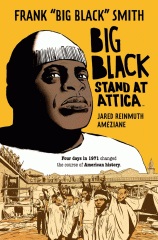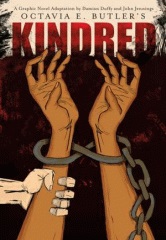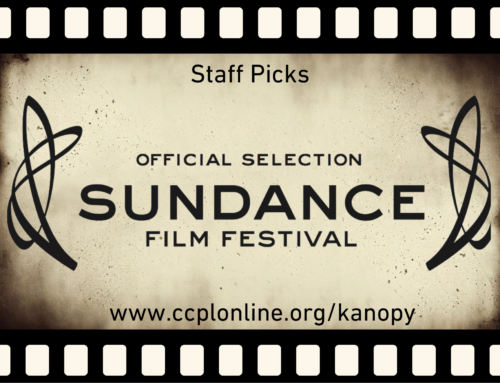
Black, Indigenous, and People of Color (BIPOC) community groups across the nation take the month of February to celebrate and observe the progression of civil rights activism as well as reflect on the ways in which we as a universal race can further develop and reinforce positive motions for change and equality. Albeit counterintuitive, one way to do this is through a conscientious nervous system reset. A convenient, cost-effective way to “reset” is, of course, through mindful reading. That’s right, studies have shown that resting and reading can improve the likelihood of success in meeting one’s goals.
In today’s fast-paced society, finding the time and space to sit down to read can be daunting. What’s more, adults all too often still choose work over rest. Reading graphic novels can be a great, low-commitment way to rest and reset. Yes, adults can enjoy graphic novels too! There’s something so grounding about immersing yourself into the world of cartoons, animation, and comics again. Many of us could agree that revisiting some favorite activities, shows, and hobbies once enjoyed during childhood may help shift a person’s mood away from depression and anxiety, if only for a moment. Having a sense of escape can directly impact one’s sense of overwhelm, allowing individuals to focus on enjoyable tasks instead of their worries and cares for the day. Further, graphic novels help us express our creativity in ways that fiction novels or nonfiction reference materials simply cannot. The heightened sense of imagery within many graphic novels’ illustrations allows us to expand our imagination, setting the characters in new places within our minds; and, sometimes, it may even help to envision ourselves as those characters. Additionally, some themes and topics are better expressed through visual aids to understand their nuance and complexity. For writers, this could possibly inspire a new article or book. Photographers and filmmakers may be inspired to photograph a scene or film a clip that builds upon the graphic novels’ narrative, and so on.
As quoted in Black & Buddhist: what Buddhism can teach us about race, resilience, transformation & freedom, Daisaku Ikeda, who was a Japanese Buddhist philosopher, educator, author, and nuclear disarmament advocate, sums up the importance of reading and its relevance to human development as follows, “Reading is a dialogue with oneself; it is self-reflection, which cultivates profound humanity. Reading is therefore essential to our development. It expands and enriches the personality like a seed that germinates after a long time and sends forth many blossom-laden branches. People who can say of a book, “This changed my life,” truly understand the meaning of happiness. Reading that sparks inner revolution is desperately needed to escape drowning in the rapidly advancing information society. Reading is more than intellectual ornamentation; it is a battle for the establishment for the self, a ceaseless challenge that keeps us young and vigorous.”
Bibliotherapy has emerged as an effective and popular treatment for anxiety and depression amongst therapists for both children and adults. Writer Gulsah Sevinc outlines several studies in the article entitled Healing Mental Health through Reading: Bibliotherapy, which supports the notion that individuals can heal through reading by envisioning themselves in the lives of the characters within the pages. The article reads, “…it is possible to conclude that bibliotherapy helps an individual to actively seek a solution for his/her problem and to struggle effectively through the path to obtain it.” A real-world example of BIPOC individuals achieving some level of healing through bibliotherapy was demonstrated through a study of children, “which was used for symptoms of trauma after Hurricane Katrina, as a result of which a secure environment was established for children to express their emotional needs. Besides, it was possible for these children to face their own situations and emotions and to overcome trauma thanks to the powerful characters in the books who were able to get over [their] problems successfully.”1
Individuals wanting to take a moment to enjoy some bibliotherapy this month and those who might be interested in learning more about BIPOC-centric stories through the unique lens of graphic novels, are invited to explore the following graphic novel titles, all available here at CCPL.
FOR FURTHER READING
After the Rain by Jennings, John, (Author)
The drama takes place in a small Nigerian town during a violent and unexpected storm. A Nigerian-American woman named Chioma answers a knock at her door and is horrified to see a boy with a severe head wound standing at her doorstep. He reaches for her, and his touch burns like fire. Something is very wrong. Haunted and hunted, Chioma must embrace her heritage in order to survive. John Jennings and David Brame’s graphic novel collaboration uses bold art and colors to powerfully tell this tale of identity and destiny.
-Description provided by Publisher
Big Black: Stand at Attica by Smith, Frank “Big Black” and Reinmuth, Jared (Author)
“In the summer of 1971, New York’s Attica State Prison is a symbol of everything broken in America — abused prisoners, rampant racism and a blind eye turned towards the injustices perpetrated against the powerless. But when the guards at Attica overreact to a minor incident, the prisoners decide they’ve had enough and revolt — taking their jailers hostage and making demands for humane conditions.”– Back cover.
Kindred: a graphic novel adaptation by Duffy, Damian and Jennings, John (Author)
“Home is a new house with a loving husband in 1970s California that is suddenly transformed into the frightening world of the antebellum South. Dana, a young black writer, can’t explain how she is transported across time and space to a plantation in Maryland. But she does quickly understand why: to deal with the troubles of Rufus, a conflicted white slaveholder – and her progenitor. Her survival, her very existence, depends on it. This searing graphic-novel adaptation of Octavia E. Butler’s science fiction classic is a powerfully moving, unflinching look at the violent, disturbing effects of slavery on the people it chained together, both black and white – and made kindred in the deepest sense of the word”– Provided by publisher.
1 Sevinc, Gulsah. “Healing Mental Health through Reading: Bibliotherapy/Ruh Sagligini Okuma Yoluyla Iyilestirme: Bibliyoterapi.” Psikiyatride Guncel Yaklasimlar/Current Approaches to Psychiatry, vol. 11, no. 4, fall 2019, pp. 483+. Gale OneFile: Psychology, link.gale.com/apps/doc/A607065456/PPPC?u=charlescl&sid=bookmark-PPPC&xid=cf201956. Accessed 25 Jan. 2024








